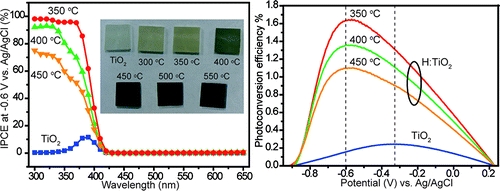1. Oxygen Deficient Hydrogen Treated Metal Oxide Photoanodes

Hydrogen-treated TiO2 nanowire arrays for photoelectrochemical water splitting, Nano Lett., 11, 3026-3033 (2011); Hydrogen-treated WO3 nanoflakes show enhanced photostability, Energy Environ. Sci., 5, 6180-6187 (2012); Computational and Photoelectrochemical Study of Hydrogenated Bismuth Vanadate, J. Phys. Chem. C, 117, 10957-10964 (2013); Efficient Suppression of Electron-hole Recombination in Oxygen Deficient Hydrogen Treated TiO2 Nanowires for Photoelectrochemical Water Splitting, J. Phys. Chem. C, 117, 25837−25844 (2013)
2. Oxygen Deficient Sn-doped Hematite Photoanodes

Surface Hydroxylated Hematite Promotes Photoinduced Hole Transfer for Water Oxidation, J. Mater. Chem. A, 7, 8050-8054 (2019); Morphology and Doping Engineering of Sn-Doped Hematite Nanowire Photoanodes, Nano Lett., 17, 2490-2495 (2017); Acid Treatment Enables Suppression of Electron-Hole Recombination in Hematite for Photoelectrochemical Water Splitting, Angew. Chem. Int. Ed., 128, 3464-3468 (2016); Influence of oxygen content on thermal activation of hematite nanowires, Angew. Chem. Int. Ed., 51, 4074-4079 (2012); Sn-Doped hematite nanostructures for photoelectrochemical water splitting, Nano Lett. 11, 2119-2125 (2011)
